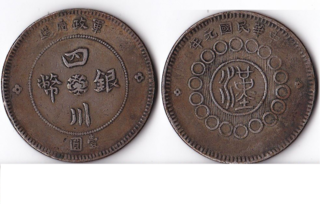Edited, memorised or added to reading queue
on 15-Jun-2019 (Sat)
Do you want BuboFlash to help you learning these things? Click here to log in or create user.
| status | not read | reprioritisations | ||
|---|---|---|---|---|
| last reprioritisation on | suggested re-reading day | |||
| started reading on | finished reading on |
The History of Communication Technology -
d to hold one piece to their ear and speak into the main phone unit. A later version, the model with which we are more familiar with today, included both earpiece and mouth piece on one handle. <span>Many telephone operators were also later replaced by self-dialing systems. A History of the Telephone Alexander Graham Bell The Story of Bell’s Telephone Early 1900s Telephone Operators First-Hand Accounts of Early Phone Technology Old Telephones and Prototype
| status | not read | reprioritisations | ||
|---|---|---|---|---|
| last reprioritisation on | suggested re-reading day | |||
| started reading on | finished reading on |
Unenumerated
ime, showing some of the many examples non-governmental money, in order to fill in some of the gaps. Privately issued IOUs and privately minted coins are covered here in part (i) of the series. <span>These IOUs can more specifically be described as bearer promissory notes, and even more specifically, when issued by banks, bank notes. The Bitcoin public blockchain implements a global settlement layer ("layer 1" in bitcoin parlance). The closest historical analog to the Bitcoin settlement layer is not to the bank note
| status | not read | reprioritisations | ||
|---|---|---|---|---|
| last reprioritisation on | suggested re-reading day | |||
| started reading on | finished reading on |
Unenumerated
in the United States was privately issued. Boone County Bank note, Lebanon, Indiana 1858. "During this era the U.S. had no central bank and paper money was issued by a variety of private banks. <span>Some was even issued by manufacturing and retail companies. This money was backed by gold, silver, real estate, stocks, bonds, and a wide variety of other assets. You can no longer cash them in, but they are now worth often substantial sums as collectibles...the note designs were more varied and creative than modern money, and were remarkably free of politicians' faces." Source Bank of De Soto note, De Soto, Nebraska, 1863. Critics hav
| status | not read | reprioritisations | ||
|---|---|---|---|---|
| last reprioritisation on | suggested re-reading day | |||
| started reading on | finished reading on |
Unenumerated
1850s (this instance unissued). Some other scholars within the Federal Reserve remembered the private note-issuing era in the United States; their central bankers' view of it can be found here. <span>Jiaozi, a bearer promissory note from the Song Dynasty. The earliest jiaozi were issued in Sichuan province by merchants to relieve their fellow merchants of the high costs of transporting the heavy government-issued iron coins. Gordon Tullock wrote of bearer promissory notes in an earlier time and different part of China, By A.D. 700-800 there were shops in China which would accept valuables, and, for a fee, k
| status | not read | reprioritisations | ||
|---|---|---|---|---|
| last reprioritisation on | suggested re-reading day | |||
| started reading on | finished reading on |
Unenumerated
their fellow merchants of the high costs of transporting the heavy government-issued iron coins. Gordon Tullock wrote of bearer promissory notes in an earlier time and different part of China, <span>By A.D. 700-800 there were shops in China which would accept valuables, and, for a fee, keep them safe. They would honour drafts drawn on the items in deposit, and, as with the goldsmith's shops in Europe, their deposit receipts gradually began to circulate as money. It is not known how rapidly this process developed, but by A.D. 1000 there were apparently a number of firms in China which issued regular printed notes and which had discovered that they could circulate more notes than the amount of valuables they had on deposit. [Source] Coins A brass half-penny issued by grocer Edward Nightingale, probably dating from the early 1670s. [Source] While in most times and places, coinage was a royal or otherwise po
| status | not read | reprioritisations | ||
|---|---|---|---|---|
| last reprioritisation on | suggested re-reading day | |||
| started reading on | finished reading on |
Unenumerated
roducing low-denomination coins, so factories minted their own or used the coins minted by another firm. A good review by Jeffrey Hummel of George Selgin's excellent analysis of this era here. <span>Privately minted coins from Sichuan province, China, 1912. While the minting of private coins, especially imitations of official coins, was often banned in order to secure a royal or other political monopoly, the industrial revolution was not the only time or place where private entities minted. Private coinage was by no means even limited to the Anglosphere. Nevertheless, the vast majority of coins in the numismatic record were minted by or under the license of kings, emperor
| status | not read | reprioritisations | ||
|---|---|---|---|---|
| last reprioritisation on | suggested re-reading day | |||
| started reading on | finished reading on |
Python Getting Started
ype: python --version If you find that you do not have python installed on your computer, then you can download it for free from the following website: https://www.python.org/ Python Quickstart <span>Python is an interpreted programming language, this means that as a developer you write Python (.py) files in a text editor and then put those files into the python interpreter to be executed. The way to run a python file is like this on the command line: C:\Users\Your Name>python helloworld.py Where "helloworld.py" is the name of your python file. Let's write our first Py
